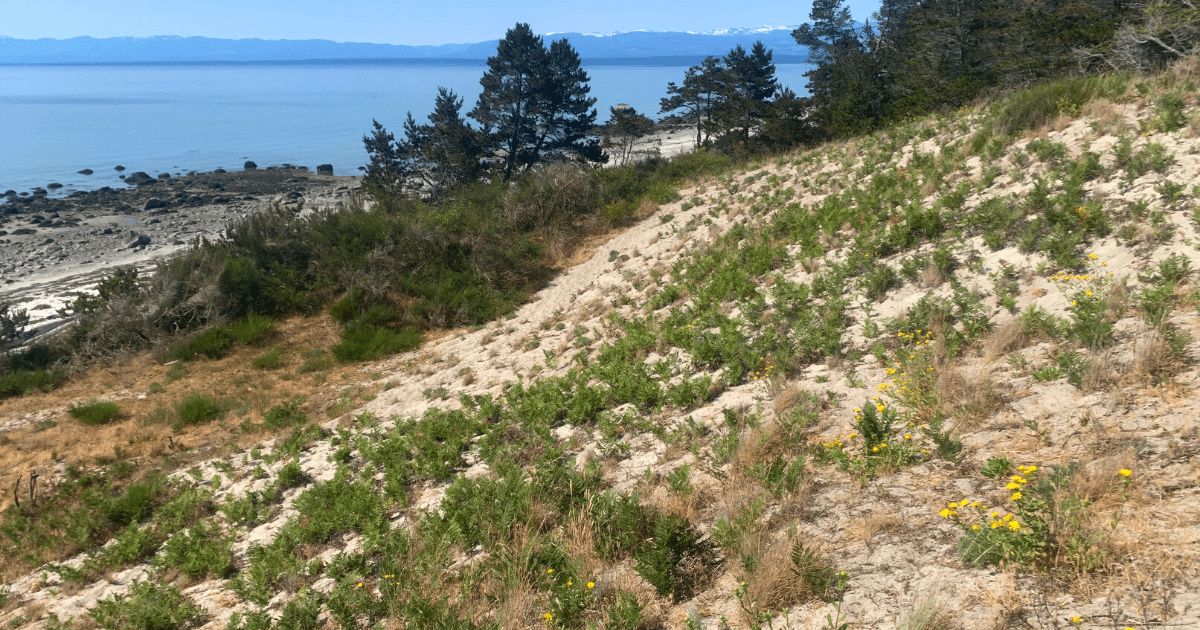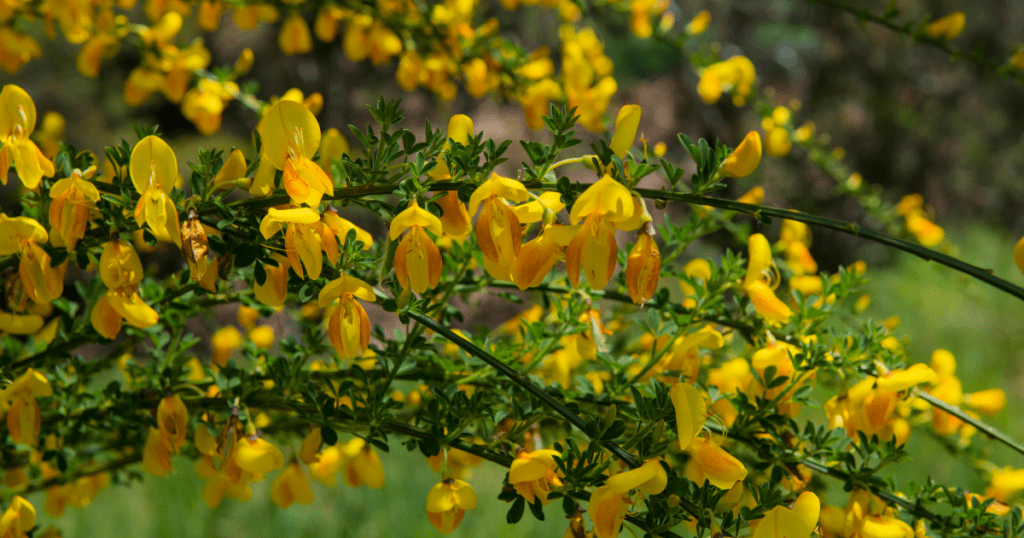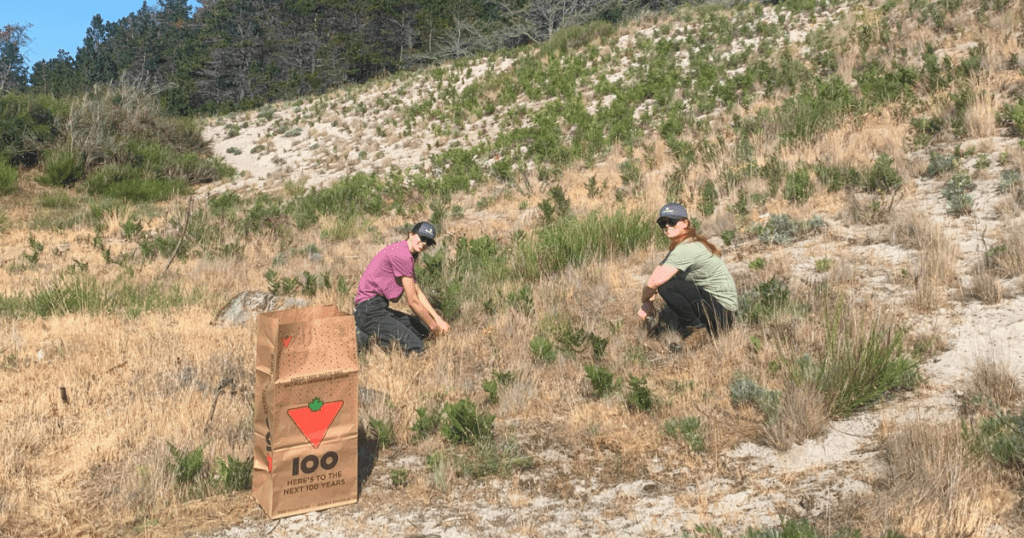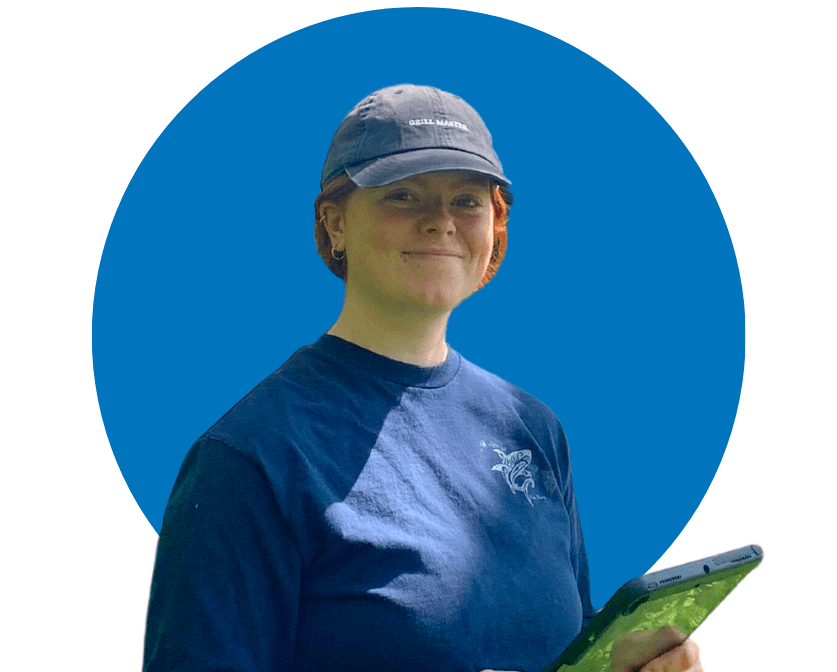
The Nature Trust of British Columbia’s South Coast Conservation Field Crew works on many diverse projects throughout the summer. However, invasive species management is one of our top priorities! We follow the current list of Priority Invasive Species in BC created by the provincial government to guide our best practices. This summer, we spent a lot of time managing scotch broom (Cytisus soparius) within two of our conservation areas: Savary Island and Harrison-Chehalis.
Scotch broom was first introduced to Vancouver Island from western and central Europe over 150 years ago as an ornamental plant. Its spread continued as it was planted throughout southern BC as a bank stabilizer. Scotch broom prefers to grow in disturbed and sunny sites along lower elevation areas in southern BC like forest clearings and meadows. When The Nature Trust tackles Scotch broom, we always consider its role as a bank stabilizer and ensure our management practices do not impose a fire hazard.

Scotch broom, invasive to British Columbia
On Savary Island, the cliffside ecosystems leading to the beautiful beaches are made up of hundreds of plants of scotch broom, but if the invasive plants were to be removed, the soil and sand could become loose with the loss of the root systems and possibly lead to those cliffsides being damaged. The shallow root systems of scotch broom make it much more effective to remove the plant, however it also makes the surrounding ecosystems more susceptible to erosion. This is why we prioritize areas with minimal slope and high abundance of threatened native species. By doing so, we minimize erosion while maximizing our efforts of conservation.
Scotch broom growing at Harrison-Chehalis presents another unique challenge. Here, it created a dense thicket in an open forest clearing which outcompetes native plants and precludes wildlife corridors. When removing this species, scotch broom poses a high fire hazard if not properly disposed of. This is because the stems contain high amounts of oil and resin when it’s alive, and especially when it has dried. At Harrison-Chehalis, we make sure to remove the fuel source off-site at a designated disposal site.

The South Coast Conservation Field Crew removes invasive Scotch Broom on Savary Island.
Our efforts to cut and remove scotch broom in the South Coast Region help to reduce fuel and fire risk while increasing biodiversity and persistence of native species. The field crew also conducts many surveys of scotch broom where it was removed, and future removal sites. This way The Nature Trust and our partners can prioritize new restoration projects and rapidly detect encroachment of invasive species.
Management of this species requires our crew to revisit the sites year after year to ensure no regrowth. Without these measures put in place by the crew, scotch broom could outcompete many of the native ecosystems we love throughout British Columbia. So, we encourage people to observe which plants exist in their community, and to try and identify some scotch Broom growing in disturbed and sunny sites so you can become an invasive species steward in your own neighbourhood!
 Written by Meagan Bunsko
Written by Meagan Bunsko

